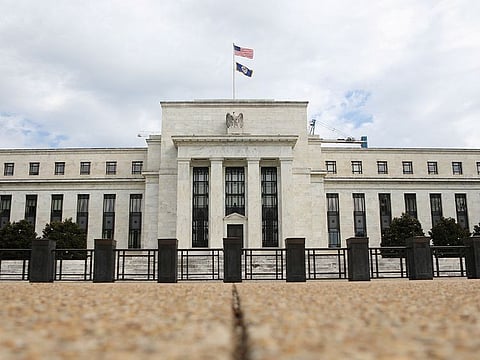Fed set to shrink rate hikes again as inflation slows
The ECB and the Bank of England will each probably raise rates by a half point

Federal Reserve officials are set to shift down the pace of interest-rate hikes again in the coming week amid signs of slowing inflation, while Friday’s jobs report may show steady demand for workers that improves the chances of a soft landing for the world’s largest economy.
Policy makers are poised to raise their benchmark federal funds rate by a quarter percentage point on Wednesday, to a range of 4.5-4.75 per cent, dialing back the size of the increase for a second-straight meeting.
The move would follow a slew of recent data suggesting the Fed’s aggressive campaign to slow inflation is working.
“I expect that we will raise rates a few more times this year, though, to my mind, the days of us raising them 75 basis points at a time have surely passed,” Philadelphia Fed President Patrick Harker said in a January 20 speech. “Hikes of 25 basis points will be appropriate going forward.”
Key questions for Fed Chair Jerome Powell at his post-meeting press conference will be how much higher the central bank intends to raise rates, and what officials need to see before pausing.
Fed officials have made clear they also want to see evidence that supply and demand imbalances in the labour market are starting to improve.
Hiring probably slowed in January, according to economists surveyed by Bloomberg, who projected employers added 185,000 jobs compared with 223,000 in December. They see the unemployment rate ticking up to 3.6 per cent, still near a five-decade low, and expect average hourly earnings rose 4.3 per cent from a year earlier, a slowdown from the prior month, according to their median estimate.
The Fed will get another important read on inflation on Tuesday when the Labour Department releases the Employment Cost Index, a broad measure of wages and benefits. Figures on job openings for December are also due Wednesday, as well as a January survey of manufacturers.
“The Fed faces a dilemma: On the one hand, inflation data has come in softer than expected, and activity indicators have shown slowing momentum over the past month. On the other, financial conditions have eased as traders believe the Fed will soon switch to rate cuts. The data would justify smaller rate hikes, but the Fed is likely to see easier financial conditions - while inflation remains uncomfortably above-target - as a reason to act hawkishly.”
Elsewhere, the day after the Fed, the European Central Bank and the Bank of England will each probably raise rates by a half point, after euro-zone data are likely to show slowing inflation and a stagnating economy. Meanwhile, surveys from China might reveal improvement, Brazil’s central bank may keep borrowing costs unchanged, and the International Monetary Fund will publish its latest global economic forecasts.
Before the ECB on Thursday, key data will draw attention for clues on the path for policy. Economists are split on whether GDP for the euro area on Tuesday will show a contraction in the fourth quarter - potentially heralding a recession - or whether the region avoided a slump.
The next day, euro-zone inflation in January is anticipated to have slowed for a third month, though a small minority of forecasters predict an acceleration.
Growth and consumer-price data from the region’s three biggest economies - Germany, France and Italy - are also due in the first half of the week, making it a busy few days for investors.
The so-called core underlying measure of inflation may show just a slight weakening. That gauge is drawing more focus from officials justifying further aggression on policy tightening.
The ECB decision itself is almost certain to feature both a half-point rate increase and more details of the plan to wind down bond holdings built up over years of quantitative easing.
Given President Christine Lagarde’s penchant for hinting at future decisions, investors may focus on any outlook she divulges for March in her press conference, at a time when officials are increasingly at odds over whether to slow tightening.
The BOE decision will also take place on Thursday, and may too feature a half-point rate increase. That would extend the UK’s quickest monetary tightening in three decades. While inflation has fallen in each of the past two months, it remains five times the central bank’s 2 per cent target.
Sign up for the Daily Briefing
Get the latest news and updates straight to your inbox



